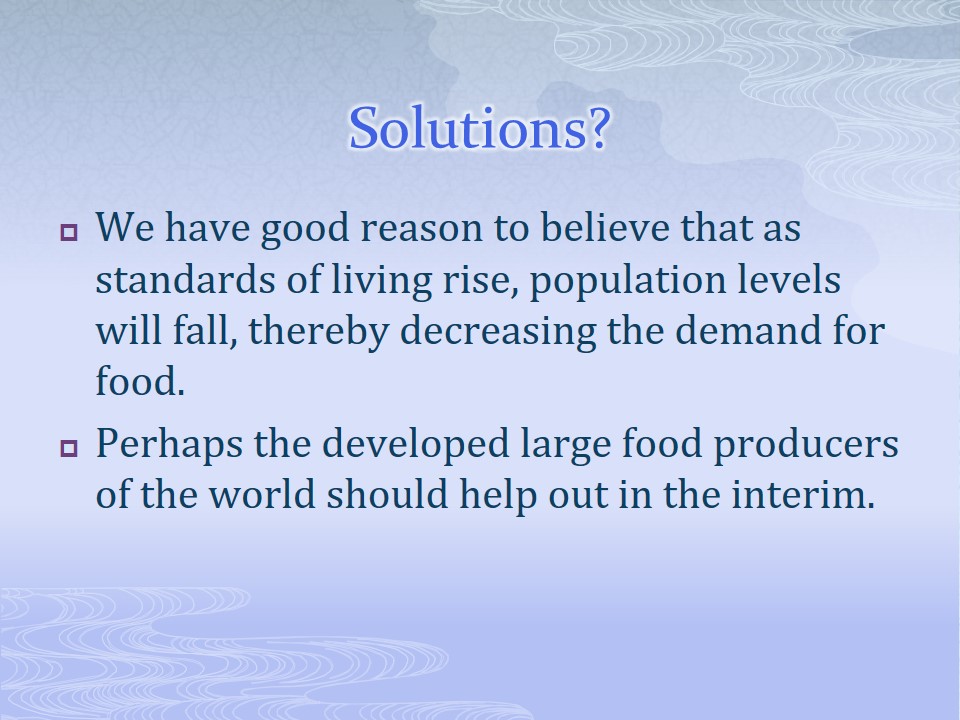We are losing valuable resources and beautiful places due to increased food demand forcing conversion of the land.
Loss of Uncommonly Beautiful Places to Higher Demand for Food is not Just Conversion of Land to Agriculture.
Demand for food was intimately connected with so many other factors, that it was not possible to consider the impact of this demand upon places of outstanding beauty in isolation.
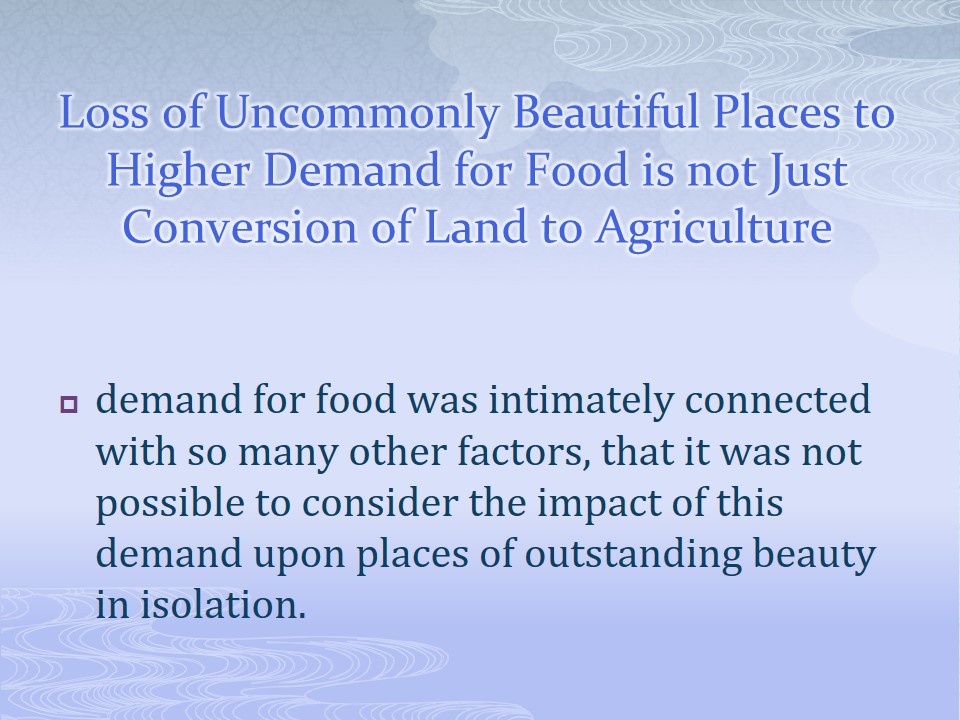
Support for Food Production
- Bio-fuels.
- Power Production.
- Roads.
- All of these support the production, distribution and transportation of food.
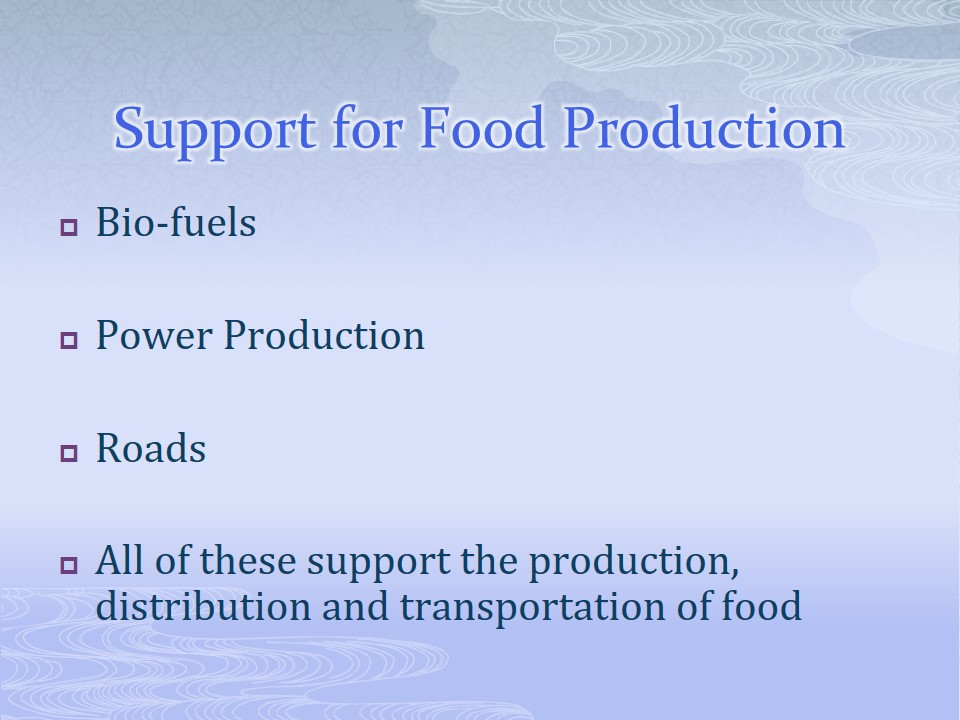
One excellent example is the Three Gorges Dam in China. Another is the Amazon.
- Both of these appear to be based upon other demands:
- power and bio-fuel,
- but they are both ultimately caused by the demand for food.
- The Ecosystem is interconnected web of natural forces and resources
- World economies are intertwined : a jerk in the smallest area produces reactions everywhere.
- The problem of saving our places of outstanding beauty from destruction due to the demand for food is interconnected to the demands for everything else.
- Two things without which no animal, including man, can live are food and water, and food depends upon water also.

The Three Gorges region of China
- The Three Gorges Region is being flooded by the Three Gorges Dam Project.
- The massive project sets records for number of people displaced (at least 1.3 million), number of cities and towns flooded (13 cities, 140 towns, 1,350 villages), and length of reservoir (more than 600 kilometers).
- This project is in support of more food, since providing more power to China supports greenhouses, large agribusiness and supplies power for transport, processing and storage. The data on the enormity of the problem in China supports this conclusion.
- These 1.3 million displaced will have to be fed also.
Mostly for Power in Support of Food Production and Transport.
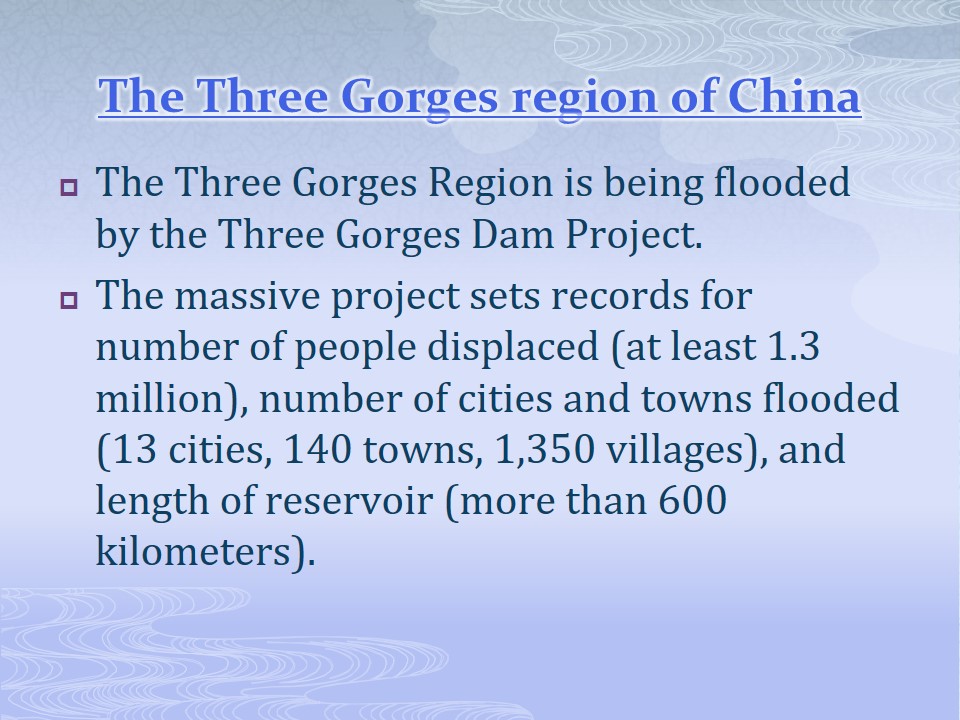
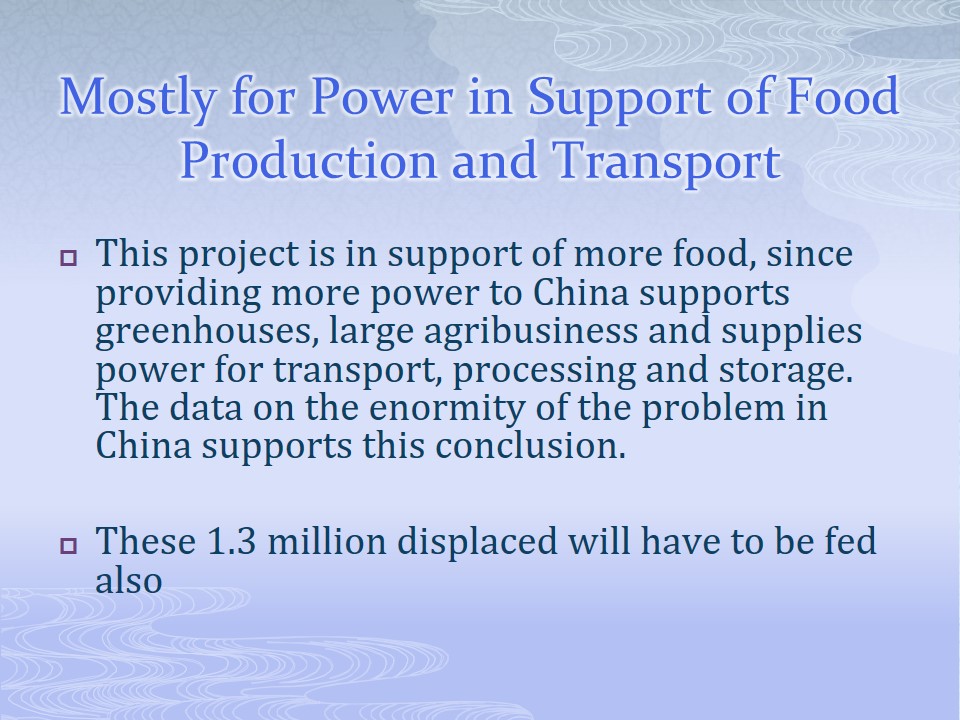
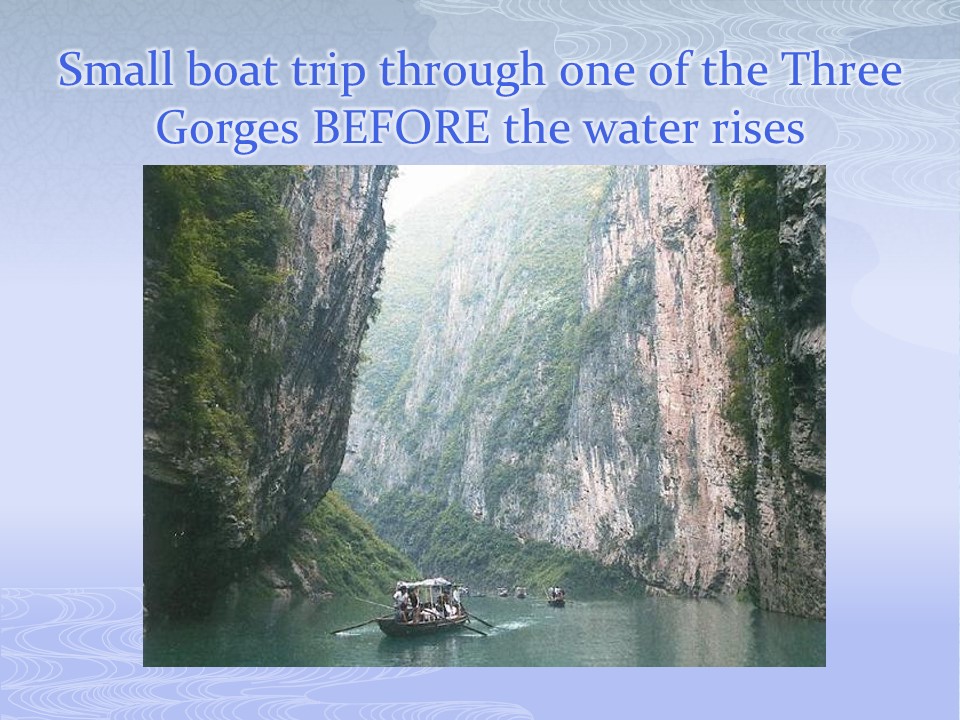


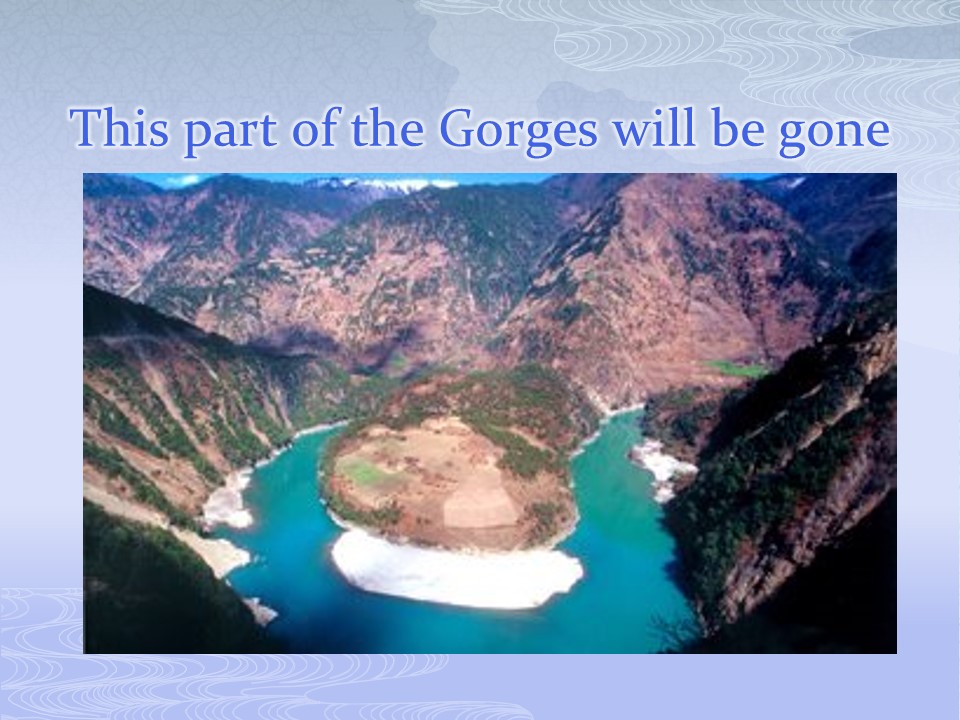

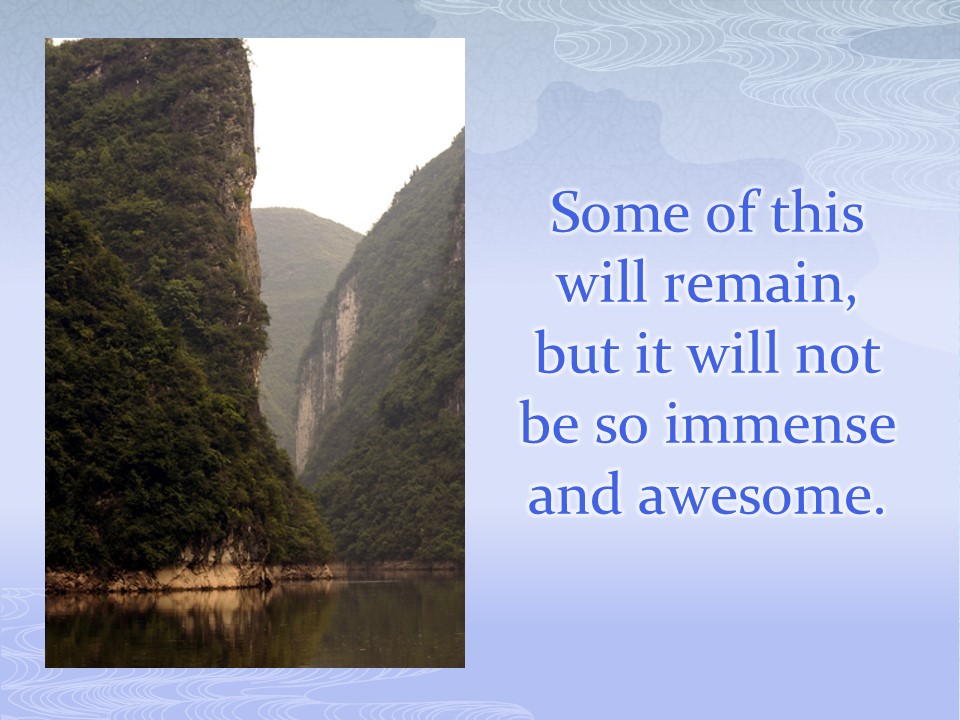
Amazon Rainforest
- The Amazon Basin, home to sixty percent of the planet’s remaining tropical rainforests, is an immense region nearly the size of the continental United States.
- It is also known that it acts like lungs for the planet.
- In addition to the proposed dam projects and those already running, much of the rainforest has been cut down for farming.
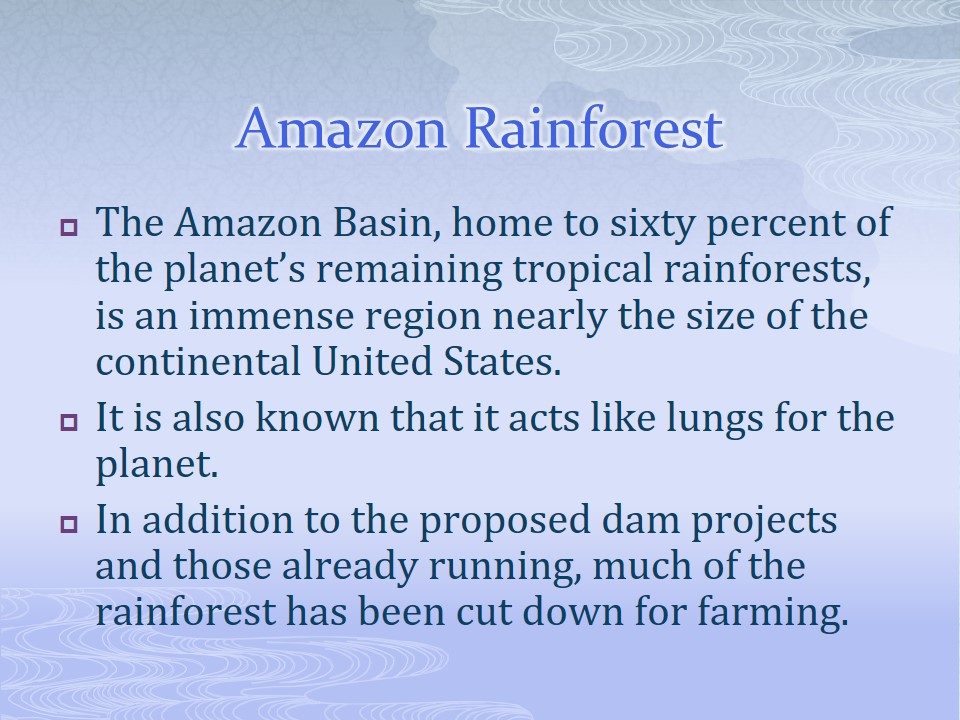
Poor Farmers and Corporations are Destroying This
- The beauty of the Amazon Basin and the river and rainforest it supports will be lost forever.
- Only 8% of the original is left.
- subsistence farming,
- companies are illegally using land to raise bio-fuel crops
- and soybeans, which also make good bio-fuel.
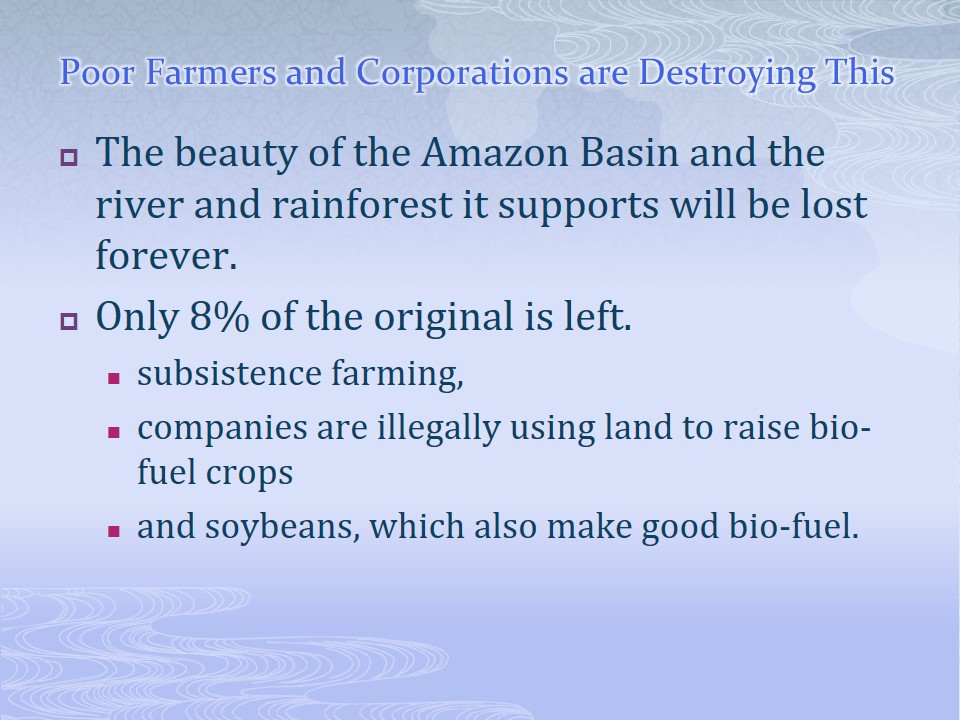
Brazilian Government Trying to Stem the Tide
- fined 24 ethanol producers 75 million US dollars for a legally clearing forests they wanted for sugarcane plantations.
- The companies will be forced to restore the forest to its original state, or as close as can be done.
- The government recently signed with foreign governments to export sustainably produced ethanol.
- taking action against loggers, ranchers, farmers and charcoal producers who violate environmental laws.
- 3000 head of cattle were found illegally grazing on deforested land. The cattle were confiscated and sold to feed the poor.
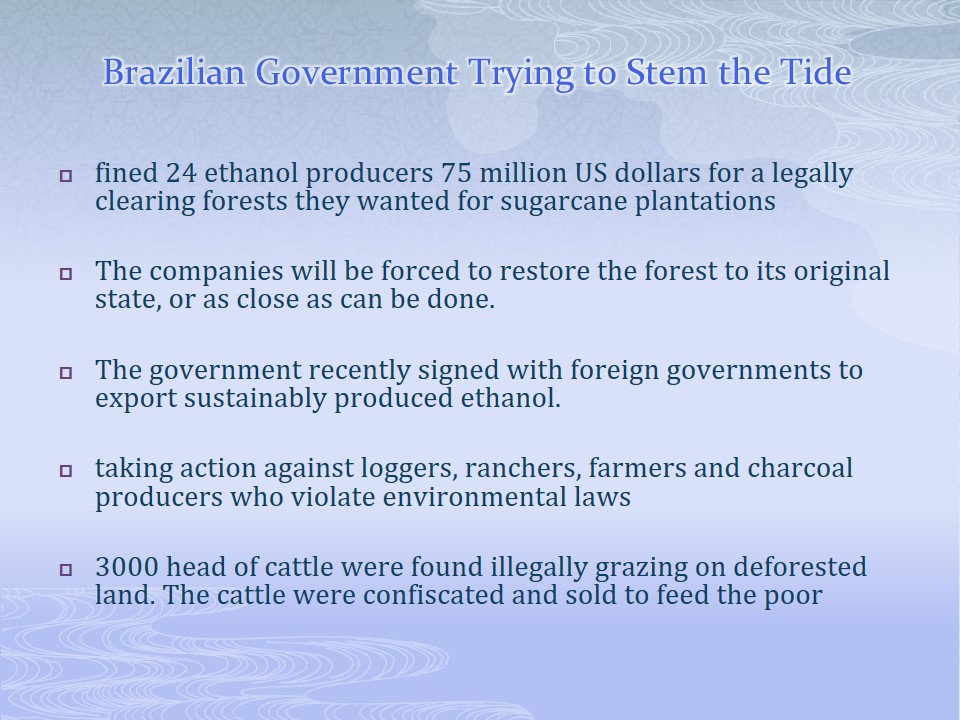
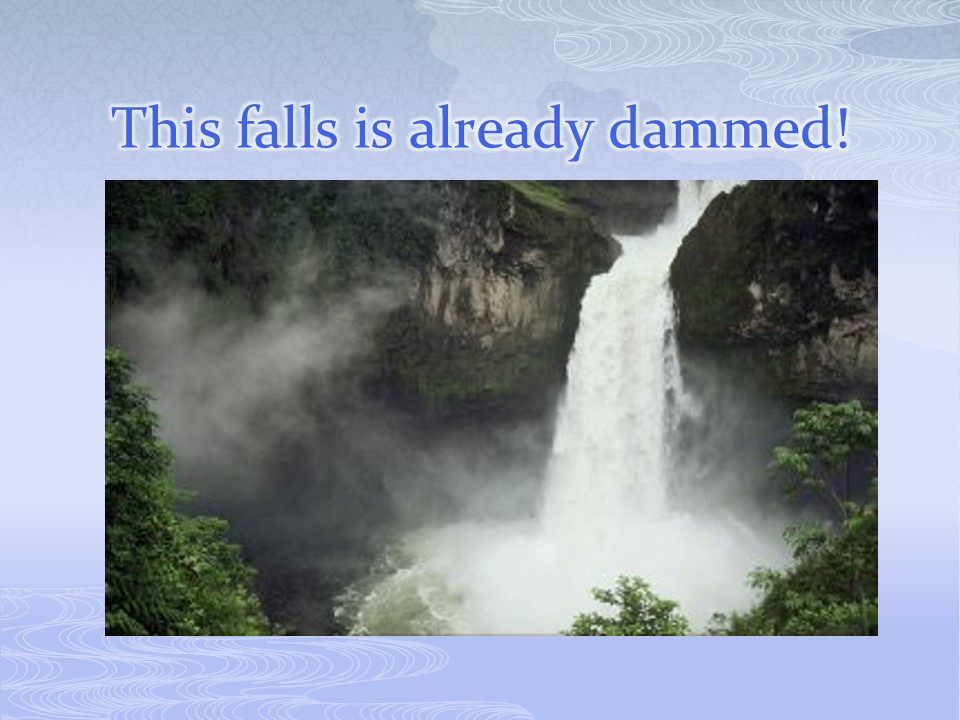
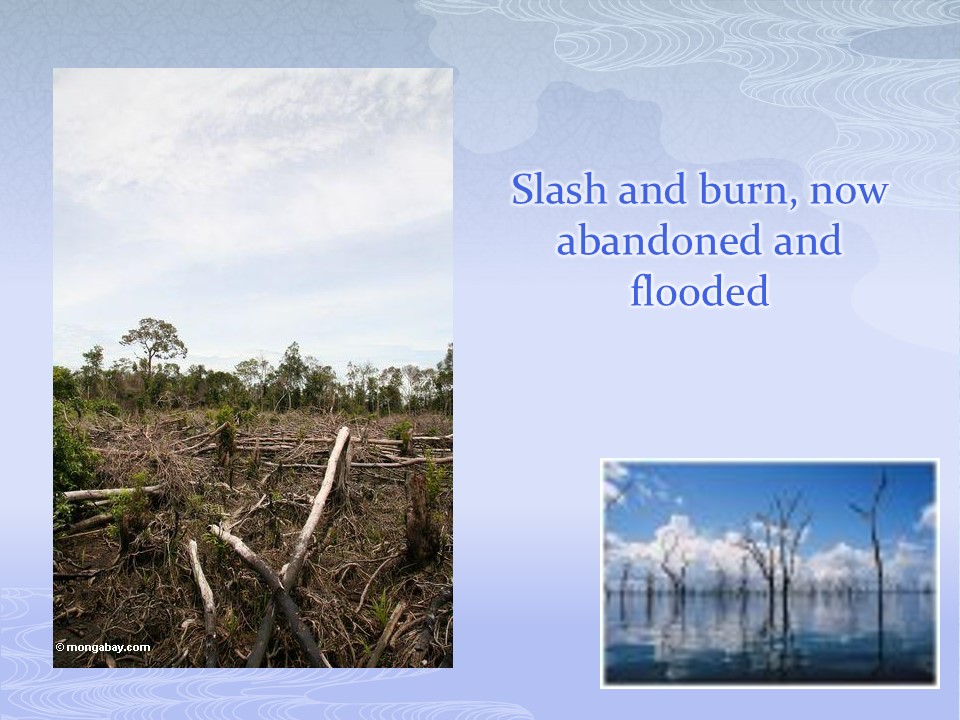

Other Places
- Other places in danger include:
- The Everglades and Okiefinochie Swamp in the southern USA,
- the wilderness areas of Central and South America,
- the Mangrove forests of Kenya,
- some of the coastal areas of North and South America,
- the remainder of the Black Forest,
- the interior portion of Wales in the foothills,
- the rainforests of Thailand, Malaysia and Burma.
- Zugma, Turkey on the Euphrates River which will be flooded, in spite of the priceless mosaics recently discovered.
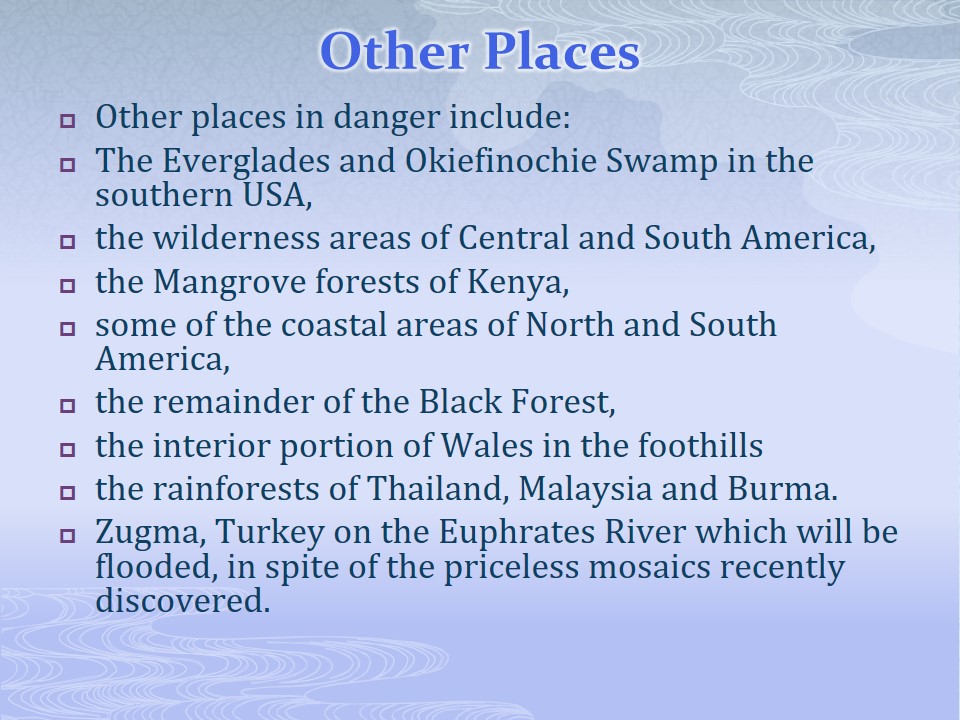
The Impact of Rural Tourism
Integrated Rural Tourism is defined as:
- Place based.
- Centrally themed or focused.
- Combines natural ecosystems and human communities.
- Is small scale, integrating easily into the economic fabric of the community.
- Directly links small-scale agriculture.
- Elders in the community provide the background.
- Education of both the visitor and the host is a cornerstone of the experience.
- Partnerships are formed within the community between parties interested in providing a tourism experience.
- Public, private, NGO partnerships are developed to provide support, encouragement, and training for the program participants.”
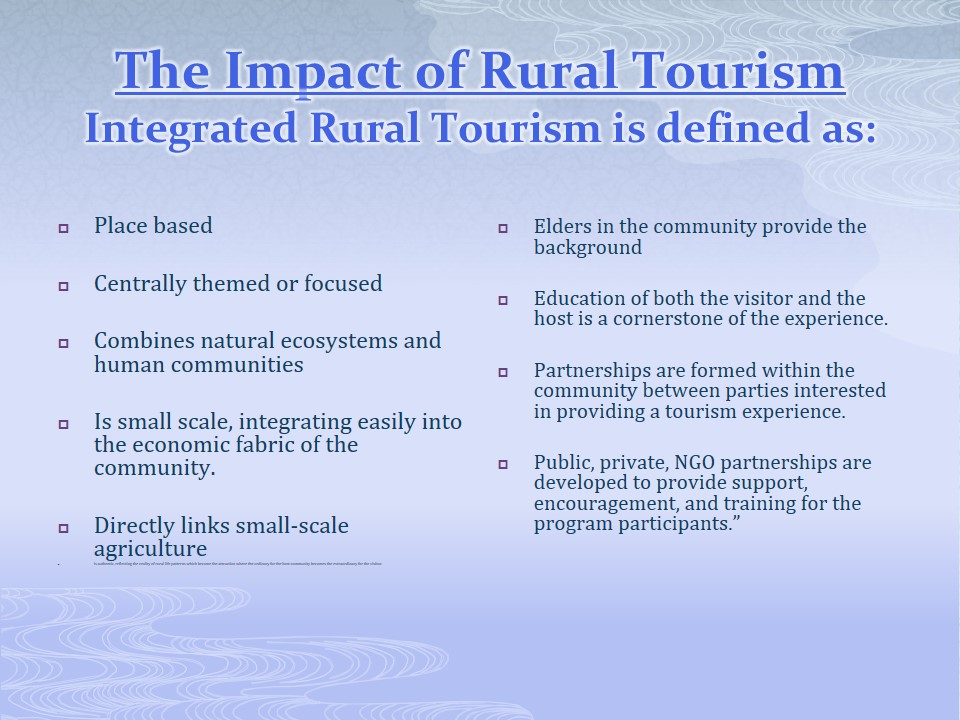
Sustainable Tourism
- Great authentic experience for visitors.
- Preserves environment and cultures.
- Provides money for hosts preventing more cash crop farming.
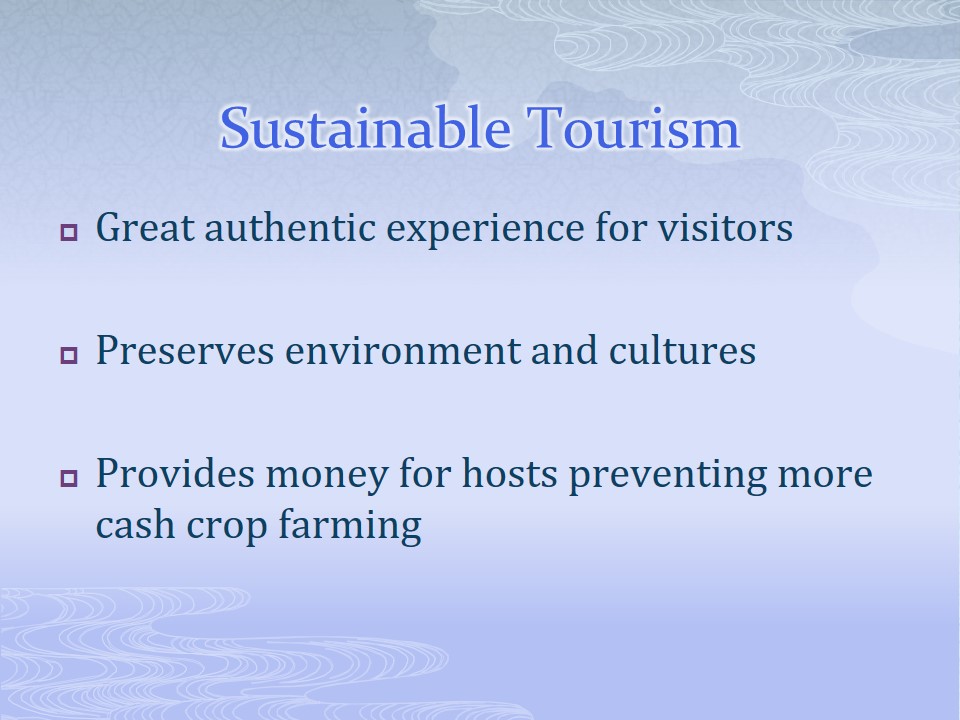
Some interesting numbers
- 99% of all tourism related establishments in the rural areas of the USA qualify as small businesses (Galston and Bachler 1995).
- Tourism in New Zealand is estimated to be between 13,500 and 18,000 small to medium establishments.
- In Isreal, 95% of all businesses are classified as small or family based and 95% of those in the hospitality industry employ fewer than three people (Fleisher et al, 1993) (Hall, Kirkpatrick, and Mitchell 2007).
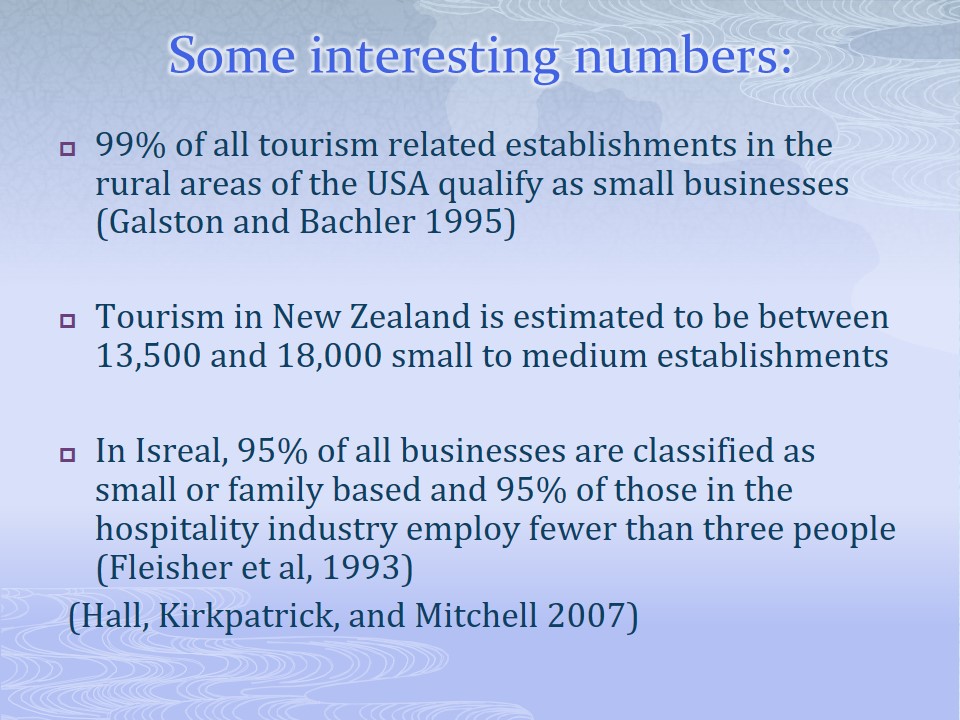
Conclustions
- The global population will increase by 2 or 3 billion more before it stabilizes about 2040.
- 7 billion of the world’s people will demand high-quality diets, as opposed to the 1 billion now.
- Together, population and affluence will more than double demand for food. We hope that low- yield farming will not crowd out the wildlife species.
- “A global primitive farming mandate, as many Green groups endorse, would result only in massive human famine,” forecasted Avery. “That certainly would solve the population pressure, but it also would destroy much of the wildlife. In a famine, every living thing gets thrown into the cookpot, and the land where it lived gets cleared for more low-yield crops.” (Mongobay 2008).
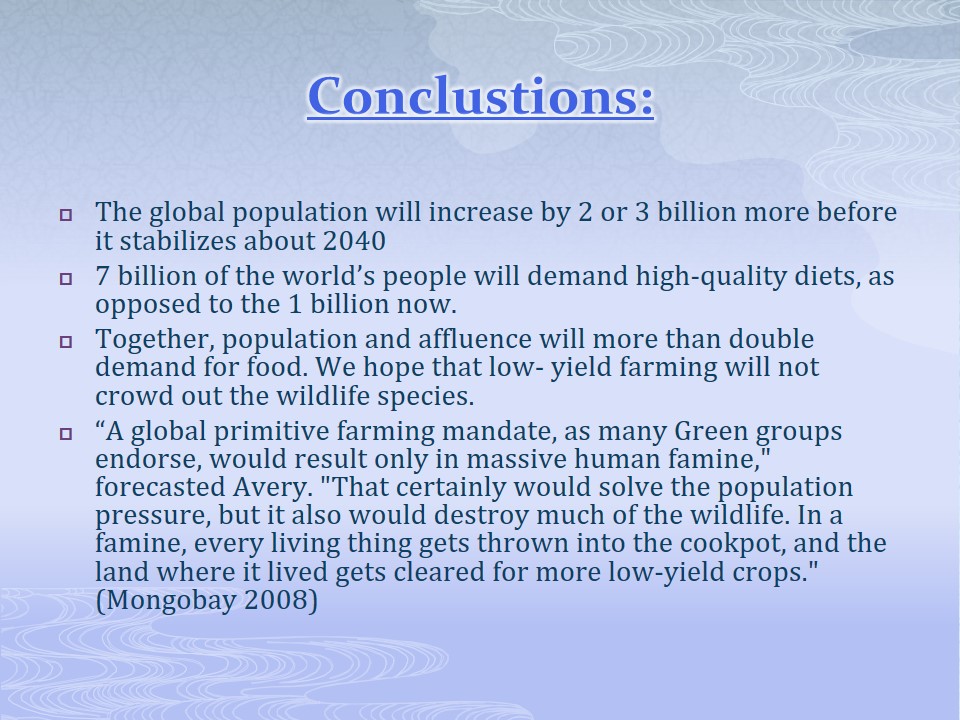
As populations move from rural to urban areas, structural shifts in food demand patterns will raise demand for food:
- A wider choice is available in urban markets.
- People are exposed dietary patterns from foreign cultures.
- Urban lifestyles require food of convenience which require less time to prepare.
- Urban residents do not grow their own food.
- Urban occupations are more sedentary than rural ones which means they don’t burn as many calories (2008).
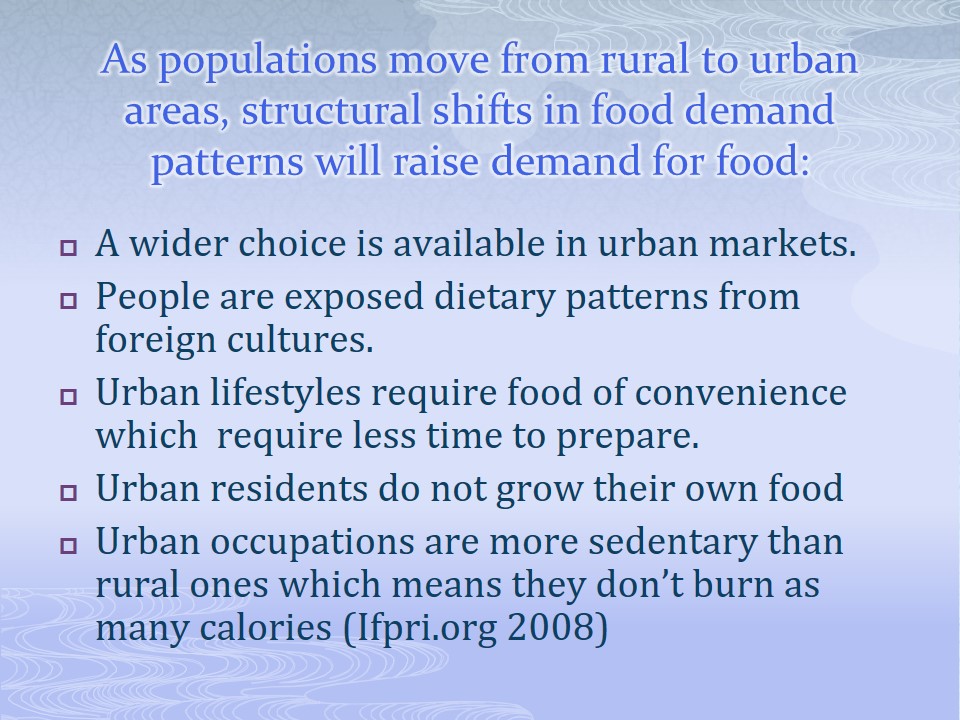
Solutions?
- We have good reason to believe that as standards of living rise, population levels will fall, thereby decreasing the demand for food.
- Perhaps the developed large food producers of the world should help out in the interim.
